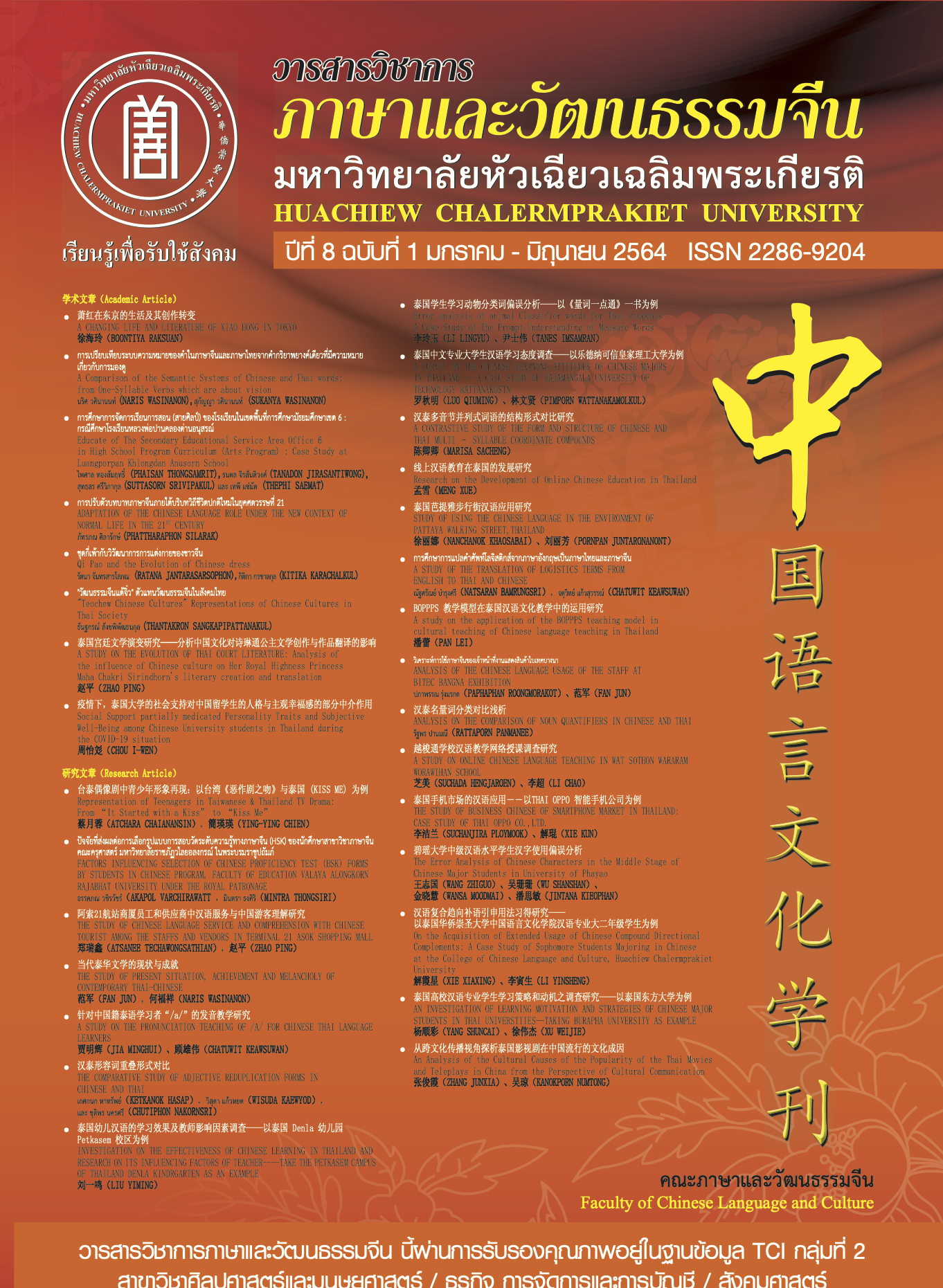ADAPTATION OF THE CHINESE LANGUAGE ROLE UNDER THE NEW CONTEXT OF NORMAL LIFE IN THE 21ST CENTURY
Keywords:
Adaptation, The role of the Chinese language, New Normal, 21st centuryAbstract
Adaptation of the Chinese language role under the new context of normal life in the 21st century to show the importance of the Chinese role in the preparation of Chinese investors as investors and partners The important trade of Thailand in the context of the new normal lifestyle in the 21st century. It is seen that the money that can drive the Thai economy to survive in the current situation from the virus crisis, Covid-19 is from Investments from foreign investors and the tourism industry from China are a lot, so people in Thailand should be able to understand both the adaptation of the Chinese role in a new way of life. In order to get to know the culture and life of the Chinese people Will bring Thailand's economic development in line with the 21st century and "Thailand 4.0" era. Modification, organization, and orientation that can cope with new opportunities and threats from the role of Chinese influencing the Thai economy. Therefore, it is necessary to prepare for the development of children and youth, as well as entrepreneurs and business owners in Thailand. Because aside from having to have knowledge of English Will have to study additional 3 languages.
References
Cardon, P. W., & Scott, J. C. (2003). Chinese business face: Communication behaviors and teaching approaches. Business communication quarterly, 66(4), 9-22.
Ding, S., & Saunders, R. A. (2006). Talking up China: An analysis of China’s rising cultural power and global promotion of the Chinese language. East Asia, 23(2), 3-33.
Gil, J. (2011). A comparison of the global status of English and Chinese: towards a new global language?. English Today, 27(1), 52.
Hansen, C. (1985). Chinese Language, Chinese Philosophy, and" Truth". The Journal of Asian Studies, 491-519.
He, A. W. (2006). Toward an identity theory of the development of Chinese as a heritage language. Heritage Language Journal, 4(1), 1-28.
Hodge, R. I. V., Hodge, B., & Louie, K. (1998). The politics of Chinese language and culture: The art of reading dragons. Psychology Press.
Lee, Y. H., & Ang, K. S. (2003). Brand name suggestiveness: A Chinese language perspective. International Journal of Research in Marketing, 20(4), 323-335.
McGinnis, S. (2005). More than a silver bullet: The role of Chinese as a heritage language in the United States. The Modern Language Journal, 89(4), 592-594.
Pan, L., & Seargeant, P. (2012). Is English a threat to Chinese language and culture?: The ‘threat’of English in China might be balanced by the promotion of Chinese language and culture. English Today, 28(3), 60-66.
Wang, X. (1996). A View from Within: A Case Study of Chinese Heritage Community Language Schools in the United States.
Yin, H. (2015). Chinese-language cyberspace, homeland media and ethnic media: A contested space for being Chinese. New Media & Society, 17(4), 556-572.
Zhao, H., & Huang, J. (2010). China’s policy of Chinese as a foreign language and the use of overseas Confucius Institutes. Educational Research for Policy and Practice, 9(2), 127-142.
Zhang, G. X., & Li, L. M. (2010). Chinese language teaching in the UK: Present and future. Language Learning Journal, 38(1), 87-97.
Downloads
Published
How to Cite
Issue
Section
License
บทความที่ได้รับการตีพิมพ์เป็นลิขสิทธิ์ของวารสารภาษาและวัฒนธรรมจีน มหาวิทยาลัยหัวเฉียวเฉลิมพระเกียรติ
บทความใน “วารสารวิชาการภาษาและวัฒนธรรมจีน” เป็นทรรศนะของผู้เขียนโดยเฉพาะ กองบรรณาธิการไม่มีส่วนในความคิดเห็นในข้อเขียนเหล่านั้น




